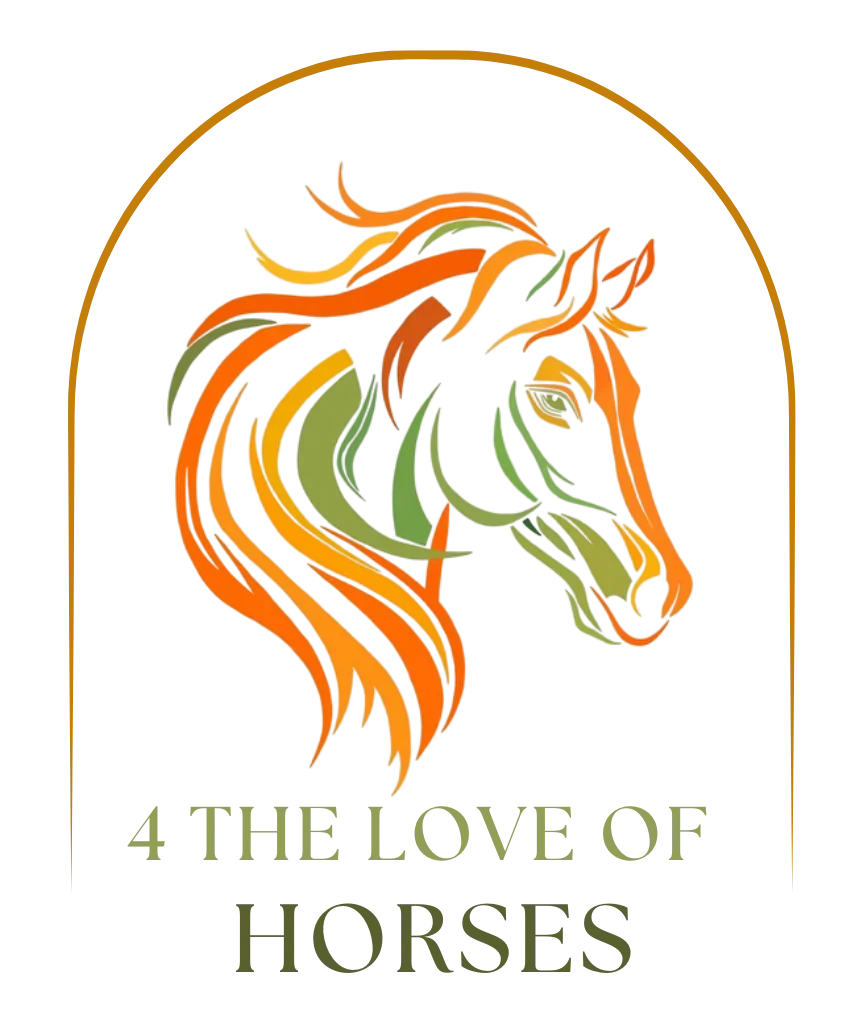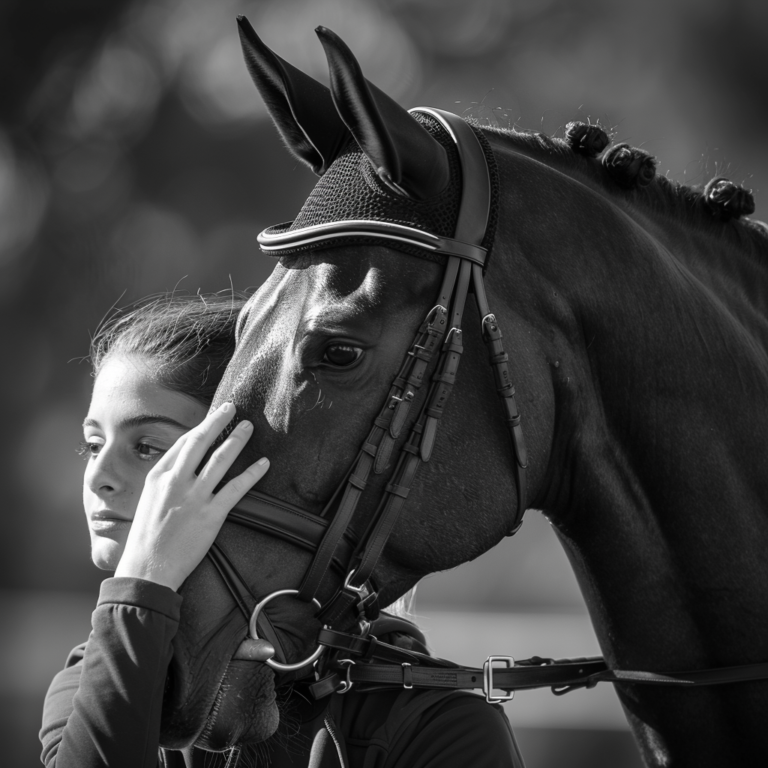Revolutionizing Equine Care: Modern Technologies for Monitoring Horse Health
Horses are remarkable athletes, and their health and well-being are crucial for optimal performance and longevity. Regular monitoring of a horse’s vital signs, behavior, and physical condition is essential for detecting potential issues early on, preventing injuries, and ensuring prompt treatment when necessary. Proper equine health management not only safeguards the animal’s welfare but also protects the significant investments made by owners and trainers.
Traditionally, equine health monitoring has relied heavily on hands-on observation and physical examination by experienced professionals. Veterinarians and equine caretakers would closely observe a horse’s appearance, movement, appetite, and overall demeanor for any signs of distress or abnormalities. Regular check-ups, including temperature monitoring, heart and respiratory rate measurements, and palpation, were standard practice. While these traditional methods are still valuable, they can be time-consuming, subjective, and limited in their ability to detect subtle changes or underlying conditions.
However, with the rapid advancements in technology, the equine industry is witnessing a paradigm shift in health monitoring capabilities. Innovative tools and techniques are emerging, offering more comprehensive, real-time, and objective data collection and analysis. From wearable sensors to imaging technologies and genetic testing, these modern approaches are revolutionizing the way we monitor and manage equine health. In this article, we will explore the cutting-edge technologies that are redefining equine care, providing earlier detection, better prevention, and more personalized treatment for our equine companions.

Wearable Devices and Sensors
Fitness trackers and activity monitors
- Tracking movement, heart rate, and respiration: One of the most promising developments in equine health monitoring is the advent of wearable fitness trackers and activity monitors. These devices, often in the form of lightweight sensors or patches, can be attached to various parts of a horse’s body, such as the girth area, legs, or head. They are designed to continuously track a range of vital parameters, including movement patterns, stride length, heart rate, and respiration rate. By collecting and analyzing this data, equine professionals can gain valuable insights into a horse’s physical activity levels, exercise intensity, and recovery patterns.
- Detecting potential injuries or lameness Beyond monitoring fitness and performance, wearable devices can also play a crucial role in injury prevention and early detection of lameness. By precisely measuring and comparing stride lengths, symmetry, and weight distribution, these devices can identify subtle changes in a horse’s gait or movement patterns that may indicate the onset of lameness or potential injury. Early intervention can then be taken to prevent further deterioration and facilitate prompt treatment, potentially saving horses from more serious and costly issues.
Temperature and vital sign monitors
- Real-time temperature monitoring: Another important aspect of equine health monitoring is the ability to track core body temperature and other vital signs. Traditionally, this has been done through manual checks, which can be time-consuming and may miss fluctuations between readings. Modern temperature and vital sign monitors, however, offer continuous, real-time monitoring capabilities. These devices can be worn as ear tags, patches, or implants, providing constant data on a horse’s temperature, heart rate, and respiratory rate.
- Detecting illness or distress: By continuously monitoring these vital signs, equine professionals can quickly identify any deviations from normal ranges, which may indicate the onset of illness, infection, or distress. Early detection of fever, tachycardia (rapid heart rate), or abnormal respiratory patterns can prompt immediate investigation and treatment, potentially preventing more severe complications. Additionally, these devices can be particularly useful in monitoring horses during transportation, competition, or other stressful situations, ensuring their well-being and safety.

Imaging Technologies
Thermal imaging cameras
- Identifying areas of inflammation or injury: Thermal imaging cameras are a powerful tool in equine health monitoring, as they can detect subtle changes in surface temperature that may indicate underlying issues. By visualizing heat patterns across a horse’s body, these cameras can identify areas of inflammation or injury that may not be immediately apparent through physical examination. Inflamed tissues or muscles tend to exhibit higher temperatures compared to surrounding areas, and thermal imaging can accurately pinpoint these hotspots.
- Early detection of potential problems: The ability to detect temperature variations early on is crucial for preventing more serious injuries or health complications. For example, a slight increase in temperature around a horse’s leg could signal the early stages of tendon or ligament inflammation, allowing for prompt intervention and treatment before the condition worsens. Thermal imaging can also be used to monitor the healing process of existing injuries, ensuring proper recovery and guiding rehabilitation efforts.
Ultrasound and X-ray advancements
- Portable and wireless options: Advancements in imaging technologies have also extended to traditional diagnostic methods like ultrasound and X-ray systems. Portable and wireless options are now available, allowing for on-site examinations and reducing the need for transporting horses to specialized facilities. These compact and lightweight devices can be easily carried to stables, fields, or competition venues, ensuring prompt diagnosis and treatment without unnecessary stress or disruption to the horse’s routine.
- Improved imaging quality and accessibility: In addition to increased portability, modern ultrasound and X-ray systems offer significantly improved image quality and resolution. High-definition imaging capabilities provide greater detail and clarity, enabling equine professionals to better visualize and analyze internal structures, identify subtle abnormalities, and make more accurate diagnoses. Furthermore, advancements in image processing and interpretation software have made these imaging modalities more accessible to a wider range of professionals, reducing the need for specialized expertise in certain cases.
Biosensors and Genetic Testing
Saliva and blood analysis
- Monitoring hydration and electrolyte levels: Biosensors have emerged as powerful tools for analyzing various biological samples, including saliva and blood, to monitor equine health. For instance, saliva-based biosensors can measure hydration levels and electrolyte concentrations, providing valuable insights into a horse’s hydration status. This is particularly important for horses engaged in strenuous activities or those living in hot and humid environments, as proper hydration and electrolyte balance are crucial for optimal performance and well-being.
- Detecting the presence of diseases or infections: Moreover, biosensors can detect the presence of specific biomarkers in blood or saliva samples, indicating the presence of diseases or infections. By analyzing these biomarkers, equine professionals can detect conditions such as inflammatory diseases, metabolic disorders, or bacterial or viral infections at an early stage, enabling prompt treatment and potentially preventing further complications.
Genetic testing
- Identifying genetic predispositions: Genetic testing is another innovative approach to equine health monitoring, offering insights into a horse’s genetic makeup and predispositions. By analyzing a horse’s DNA, researchers can identify genetic variants that may increase the risk of certain health conditions or physical traits. This knowledge can be invaluable in developing targeted prevention and management strategies for individual horses.
- Personalized care and preventative measures: With genetic information in hand, equine professionals can tailor personalized care plans and implement preventative measures tailored to each horse’s unique genetic profile. For example, if a horse is found to have a genetic predisposition for certain musculoskeletal disorders, appropriate exercise regimens, nutritional plans, and monitoring protocols can be established to mitigate the risk of developing those conditions. Genetic testing can also guide breeding decisions, helping to produce healthier and more resilient offspring.

Data Integration and Remote Monitoring
Cloud-based platforms and apps
- Centralized data storage and analysis: With the wealth of data generated by various monitoring technologies, effective data management and analysis are crucial. Cloud-based platforms and mobile applications have emerged as powerful solutions for centralizing and organizing this information. These systems allow for seamless integration of data from wearable devices, biosensors, imaging technologies, and genetic tests, creating a comprehensive digital health record for each horse.
- Remote access for veterinarians and owners: One of the key benefits of cloud-based platforms is the ability to provide remote access to authorized veterinarians, trainers, and owners. Through secure logins, these stakeholders can access a horse’s health data from anywhere, enabling real-time monitoring and timely interventions. Veterinarians can review vital signs, activity levels, and diagnostic results, making informed decisions without being physically present. Owners can also stay informed about their horse’s well-being, fostering better communication and collaboration with the equine care team.
Telemedicine and virtual consultations
- Increased accessibility to equine specialists: The integration of telemedicine technologies into equine health monitoring has the potential to revolutionize access to specialized care. Through video conferencing and remote consultation platforms, owners and veterinarians can connect with equine specialists from around the world, regardless of geographical barriers. This increased accessibility to expert knowledge and advice can be invaluable in diagnosing and managing complex or rare conditions.
- Efficient monitoring and decision-making: Telemedicine also facilitates efficient monitoring and decision-making processes. Specialists can review a horse’s health data, imaging results, and other relevant information remotely, providing timely insights and recommendations without the need for on-site visits. This streamlined communication and collaboration can lead to faster diagnoses, more informed treatment plans, and improved overall management of equine health issues.
Benefits and Challenges
Improved equine wellness and performance
The adoption of modern health monitoring technologies offers significant benefits for equine wellness and performance. By providing continuous, real-time data on vital signs, activity levels, and potential issues, these technologies enable proactive and personalized care tailored to each horse’s unique needs. This approach can lead to improved overall health, enhanced performance, and reduced risk of injuries or illnesses, ultimately promoting longevity and well-being for equine athletes.
Early detection and prevention of health issues
One of the most significant advantages of these advanced monitoring systems is their ability to detect subtle changes or anomalies at the earliest possible stage. Early detection of potential health issues, whether it’s inflammation, lameness, or underlying conditions, allows for prompt intervention and preventative measures. This proactive approach can prevent minor issues from escalating into more serious and costly problems, reducing the need for extensive treatments and improving the chances of full recovery.
Cost and accessibility considerations
While the benefits of equine health monitoring technologies are undeniable, their widespread adoption may be hindered by cost and accessibility factors. Many of these technologies, such as wearable devices, imaging systems, and genetic testing, can be expensive, potentially limiting their availability to smaller stables or individual owners with limited resources. Additionally, the infrastructure required for data management and remote monitoring may pose challenges for areas with limited internet connectivity or technological infrastructure.
Privacy and data security concerns
As with any technology that collects and stores personal data, privacy and data security concerns must be addressed in the equine health monitoring landscape. Ensuring the confidentiality and proper handling of sensitive information, such as genetic data or medical records, is crucial. Robust data protection protocols, secure cloud storage solutions, and strict access controls must be implemented to safeguard the privacy of horses and their owners while still enabling efficient data sharing among authorized professionals.

Conclusion
In this article, we have explored the cutting-edge technologies that are transforming equine health monitoring. From wearable devices that track vital signs and activity levels to advanced imaging techniques like thermal imaging and portable ultrasound, these innovations provide unprecedented insights into a horse’s physical condition and well-being. Additionally, biosensors and genetic testing offer personalized approaches to disease detection, prevention, and tailored care plans. The integration of cloud-based platforms and telemedicine further enhances data management, remote monitoring, and access to specialized expertise.
As technology continues to evolve, the equine health monitoring landscape holds immense potential for further advancements. Miniaturization and improved battery life could lead to even more discreet and long-lasting wearable devices. Artificial intelligence and machine learning algorithms may enable automated analysis of vast datasets, providing predictive insights and early warning systems for potential health issues. Moreover, the integration of virtual and augmented reality could revolutionize remote consultations and training for equine professionals.
In the ever-evolving world of equine sports and recreation, the well-being and performance of these magnificent animals are paramount. Embracing new technologies for equine health monitoring is not only a matter of staying ahead of the curve but also a commitment to providing the best possible care for our equine companions. By harnessing the power of these innovations, we can enhance our understanding of equine health, make more informed decisions, and ultimately ensure that our four-legged athletes thrive and perform at their highest potential. The future of equine care is undoubtedly intertwined with technological advancements, and it is our responsibility to embrace these developments for the betterment of our equine partners.
Further resources
- Scientific Journals and Publications:
- Journal of Equine Veterinary Science
- Equine Veterinary Journal
- Journal of Equine Veterinary Education
- Equine Veterinary Education
- Industry Organizations and Associations:
- American Association of Equine Practitioners (AAEP)
- International Society for Equine Science (ISES)
- International Society for Equitation Science (ISES)
- Equine Science Society (ESS)
- University and Research Centers:
- Equine Research Centre, University of Guelph
- Gluck Equine Research Center, University of Kentucky
- J.D. Wheat Veterinary Orthopedic Research Laboratory, University of California, Davis
- Equine Research Program, Colorado State University
- Technology Companies and Startups:
- Equinosis (Lameness Evaluation Technologies)
- EquiTrace (Wearable Sensors and Analytics)
- Equivont (Monitoring and Telemedicine Solutions)
- Equine Smartbits (Biosensors and Genetic Testing)
- Online Resources and Blogs:
- The Horse (www.thehorse.com)
- Equine Science Update (www.equinescience.ca)
- EquinEED (www.equineed.com)
- Equine Guelph (www.equineguelph.ca)
- Conferences and Events:
- International Society for Equitation Science Conference
- Equine Science Society Symposium
- AAEP Annual Convention
- World Horse Welfare Conference








Leave a Reply